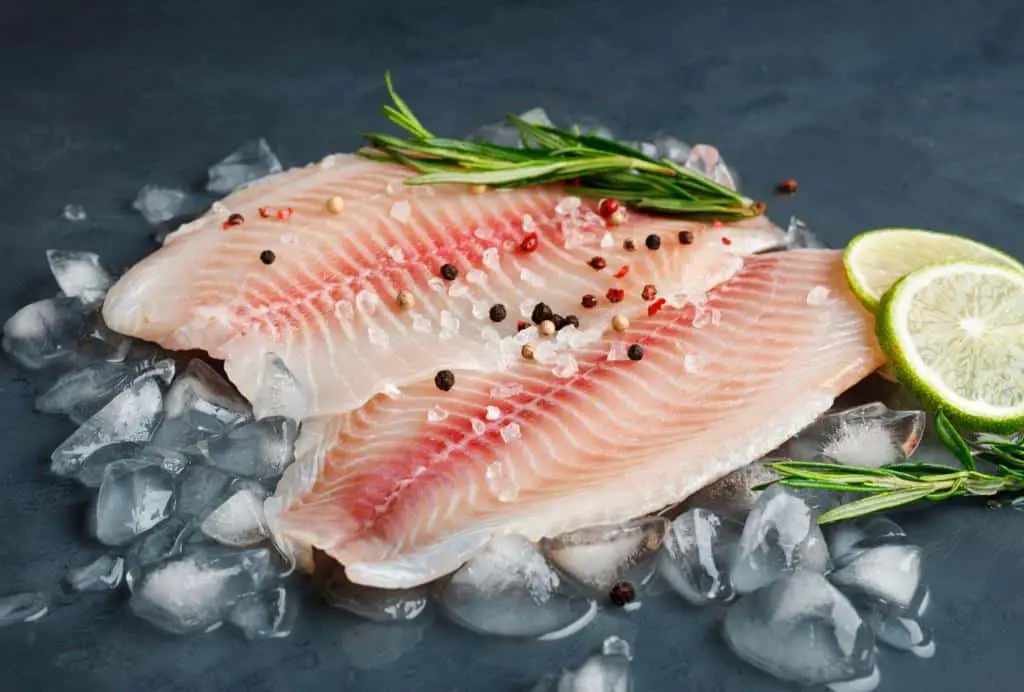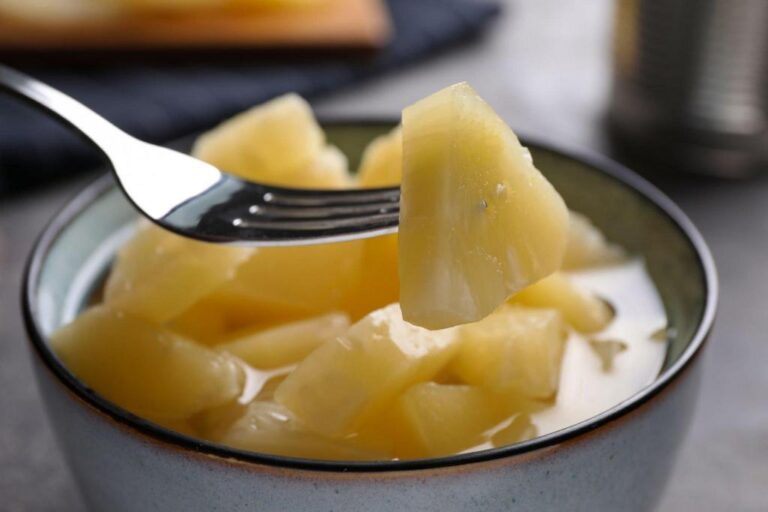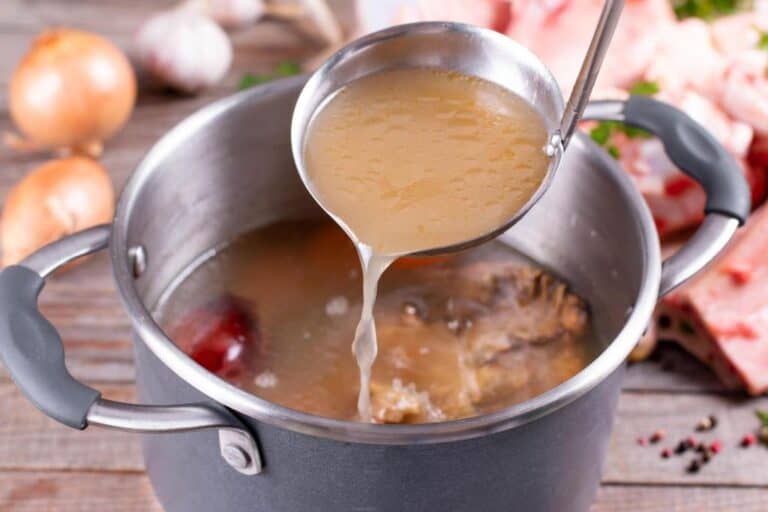Can You Eat Perch Skin and Bones? Are They Safe to Eat?

In the realm of tantalizing seafood, the humble perch often takes center stage, inviting both curiosity and appetite. If you’ve ever found yourself at a dinner table, staring at a beautifully cooked perch, a question might have danced across your mind: Can you eat perch skin and bones? Are they safe to eat?
Yes, perch skin and bones are safe to eat. Like most fish skins, they are safe to eat. Perch skin is edible and is said to be tasty. However, some people may find it unappetizing.
Prepare to embark on a culinary exploration where we unravel the secrets behind these seemingly unconventional delicacies. From the delicate allure of perch skin to the tiny yet flavorful world of its bones, we’ll navigate the realms of taste, texture, and safety.
So, whether you’re an avid angler, a seafood enthusiast, or simply someone seeking a truly immersive dining experience, fasten your seatbelt – we’re about to embark on a journey that will leave your taste buds tingling and your culinary knowledge enriched.
Perch Fish: A Brief Introduction
Perch, a well-known species among fishing enthusiasts, holds a special place in the world of angling and cuisine. Its widespread popularity stems from its adaptable taste, which seamlessly blends with diverse culinary styles. Inhabiting a range of aquatic environments, this fish showcases a unique visual allure, displaying hues that shift gracefully from olive-green to golden-yellow. Its standout feature, the array of vertical stripes spread across its body, adds to its captivating appearance.
However, perch isn’t just captivating in its aesthetics; its culinary value is equally impressive. The tenderness of its snow-white flesh is a testament to its fine quality. When savored, it presents a mild yet distinctive flavor, carrying subtle hints of sweetness that elevate its profile in the realm of seafood.
This sought-after quality makes perch a sought-after ingredient for a myriad of delectable dishes. From pan-fried delicacies to elaborate seafood platters, perch’s versatility shines through, adapting well to a variety of preparation methods.
Whether you’re an avid angler aiming to reel in a prized catch or a food enthusiast seeking a delightful gastronomic experience, perch offers a delightful rendezvous with nature’s bounty. Its enchanting visage and delicate taste harmonize seamlessly, making it a prime choice for both the thrill of the catch and the joy of the meal.
The Edibility of Perch Skin and Bones

When it comes to eating perch skin and bones, the answer is a resounding yes. However, the decision to consume these parts hinges on personal preference and proper preparation.
While some people savor the crispy texture and added flavor of well-cooked perch skin, others may choose to remove it. The crispiness and extra flavor brought by well-cooked perch skin appeal to some, while others may opt to skip it. Prioritizing the proper cooking of the skin is paramount to ensuring safety and enjoyment.
When skillfully cooked, this skin transforms into a delectable crispy layer, offering a tantalizing contrast to the succulent meat beneath. Bursting with intensified flavors resulting from the cooking process, the skin adds an additional dimension to your dining escapade. Whether you’re a fan of contrasting textures or a connoisseur of bold flavors, the edible perch skin promises to enrich your gustatory encounter.
Nutritional Composition of Perch Skin and Bones
Delving into the nutritional composition of perch skin and bones uncovers a surprising array of health benefits. Packed with protein, collagen, and beneficial fats, perch skin offers a unique twist on nutrition compared to its flesh. Its higher fat content leads to increased calories, but this isn’t all bad news.
This fat brings along omega-3 fatty acids, famed for their heart-protective prowess. These nutrients may contribute to improved cardiovascular health and brain function, making perch skin a potentially heart-smart choice.
Yet, it’s important to approach perch skin consumption with mindfulness. For those with fish or seafood allergies, a note of caution is in order due to potential allergenic factors. Those without allergies, though, might appreciate the skin’s potential to enhance skin health and promote joint flexibility, thanks to its collagen content.
Whether pan-fried to crispy perfection or incorporated into dishes, perch skin adds a distinct flavor and texture that can elevate culinary experiences. In the realm of nutrition, its unique blend of protein, fats, and collagen opens up a world of tantalizing possibilities for health-conscious food explorers.
Benefits of Eating Perch Skin and Bones
Benefits of Consuming Perch Skin
- Texture Sensation: Perch skin introduces an engaging textural element to your meal, elevating the overall sensory experience.
- Nutrient Rich: The skin contains essential nutrients like Omega-3 fatty acids, which contribute to heart health and brain function.
- Flavor Amplifier: The skin retains flavors and seasonings, enhancing the taste profile of the fish.
Advantages of Including Perch Bones
- Calcium Source: Fish bones, including those of perch, provide a natural source of calcium, crucial for maintaining strong bones and teeth.
- Enhanced Flavors: Cooking perch with bones intact can infuse your dish with an added depth of flavor that’s sure to tantalize your taste buds.
- Minimal Risk: Perch bones are soft and small, and when properly cooked, they can be safely chewed and ingested without causing harm.
How to Enjoy Perch Skin and Bones
While the consumption of perch skin and bones can offer a delightful culinary experience, it’s vital to approach them with care to ensure your safety. Here are some key guidelines to follow:
Preparing Perch Skin:
- Thorough Cleaning: Before cooking, ensure the skin is thoroughly cleaned, removing any dirt or scales.
- Cooking Technique: Grilling, baking, or pan-searing are excellent methods to achieve a crispy and flavorful perch skin.
- Crisp Perfection: Cook until the skin is crispy and golden-brown, indicating that it’s ready to be relished.
Navigating Perch Bones:
- Cooking Thoroughly: Proper cooking makes perch bones softer and safer to consume. Ensure the fish is cooked to an internal temperature of 145°F (63°C).
- Mindful Chewing: Chew bones carefully and slowly. The small size of perch bones reduces the risk of choking.
- Bone Removal: If preferred, you can fillet the fish to remove the bones, although this might result in missing out on the unique flavors they contribute.
Culinary Preparation and Cooking of Perch Skin
Preparing perch skin opens the door to culinary creativity. Various cooking methods can be employed to achieve delectable results. From grilling to baking and frying, each technique imbues the skin with distinct textures and flavors. To ensure an enjoyable eating experience, removing excess moisture from the skin before cooking is essential. Seasoning options are practically limitless, allowing you to tailor the taste to your preferences.
| Cooking Methods | Texture | Flavor |
| Grilling | Crispy | Smoky |
| Baking | Tender | Mild |
| Frying | Crunchy | Savory |
Is It Safe to Eat Perch Skin and Bones?
Diving into the delectable world of perch skin and bones offers a culinary journey worth savoring. However, it’s crucial to remember that safety takes the lead on this delectable adventure.
One notable concern is the risk of choking on the small bones present in the perch. This risk is particularly relevant for youngsters and the elderly, who may face greater challenges in managing bone consumption. Embracing these safety guidelines is key:
- Chew with Care: Adopting proper chewing techniques can significantly reduce the risk of choking. Take your time to chew thoroughly and break down the fish bones before swallowing.
- Mindful Consumption: Being aware of what you’re eating is essential. When enjoying perch skin and bones, give your meal your full attention, ensuring you’re not rushing through it.
- Serve Size: Consider the portion size you’re consuming. Smaller bites can be easier to manage and chew properly, minimizing the risk of bone-related mishaps.
By coupling the allure of the distinct flavors and textures of perch skin and bones with responsible eating habits, you can relish every bite safely. So, while embarking on this culinary escapade, keep in mind the balance between gastronomic delight and mindful consumption to make your dining experience truly enjoyable and secure.
Cultural or Regional Differences in Consuming Fish Skin and Bones
Indeed, the world of culinary traditions is as diverse as it is flavorful, and this extends to the way different cultures and regions approach consuming fish skin and bones. These differences offer a captivating glimpse into the wide array of gastronomic experiences around the globe.
1. Japanese Cuisine: In Japan, the art of dining goes beyond taste; it’s an aesthetic and cultural journey. Here, fish skin and bones are often celebrated in dishes like “katsuobushi” – dried, fermented, and smoked skipjack tuna – where the skin adds a unique texture and flavor. Sushi enthusiasts might also appreciate the crispy contrast fish skin provides in “temaki” rolls.
2. Scandinavian Delights: In the Scandinavian realm, fish skin and bones take on a prominent role. From Sweden to Norway, traditional methods of preserving fish often involve keeping the skin and bones intact. A notable example is “surströmming,” where fermented herring is enjoyed along with the skin and bones, offering a blend of flavors and textures that resonate with the region’s heritage.
3. Mediterranean Flavors: The Mediterranean cuisine, known for its emphasis on fresh ingredients and bold flavors, also welcomes fish skin and bones. Dishes like “escabeche” in Spain showcase fried fish with crispy skin, while in Greece, “psari plaki” often features fish baked whole, allowing the eater to relish the entire fish – skin and bones included.
This culinary world tour highlights the rich tapestry of preferences, reflecting cultural histories and local palates. From crispy Japanese delicacies to hearty Scandinavian feasts and Mediterranean delights, the acceptance and celebration of fish skin and bones vary greatly, offering a delectable reminder of the interconnectedness of food and culture.
In Summary
Is it safe to consume perch skin? Absolutely! When prepared with care and cooked to perfection, both the skin and bones of perch can provide a delightful culinary experience. Cooking perch with the skin intact allows you to enjoy not only the fish’s tender flesh but also its unique and satisfying texture. The skin offers a satisfying crunch and a burst of flavors, making it a crispy perch skin delicacy you won’t want to miss.
Perch skin’s nutritional value is also noteworthy. Including fish skin in your diet introduces a source of collagen, which can benefit skin health and joint flexibility. Additionally, the skin holds a rich concentration of healthy fats and proteins. As you relish the opportunity to enjoy a plate of freshly cooked perch, you’re also treating yourself to the benefits of eating perch skin – a blend of taste and nourishment.
Navigating the bones requires mindfulness, especially for those seeking the calcium-rich benefits they provide. Remember, safety comes first – clean the skin thoroughly and chew bones mindfully. So, the next time you dig into this versatile fish, savor the delicate crunch of the skin and the subtle richness of the bones. Perch skin preparation is an art that promises a journey through flavors and textures, making every bite a true bon appétit moment.
FAQs on Perch Skin and Bones Concumption
How do you cook fish skin to make it crispy?
To make fish skin crispy, pat it dry, season it, and cook it skin-side down in a hot pan with a bit of oil. Allow it to cook without moving until it becomes crispy and golden.
What nutrients are in fish bones?
Fish bones contain calcium, phosphorus, and other trace minerals that contribute to bone health. They also provide collagen, which supports skin, hair, and joint health.
Is eating fish bones safe?
Yes, consuming properly cooked and softened fish bones is safe. Small, well-cooked bones are unlikely to cause harm when chewed mindfully.
Is it safe to eat perch skin and bones?
Yes, it’s safe to eat perch skin and bones when cooked properly. Crispy skin and well-cooked bones can add texture and nutrition to your meal.
How can I prepare perch skin to make it edible and enjoyable?
Clean the skin thoroughly, season it, and cook it until crispy. The skin can add a delightful crunch and flavor to your perch dish.
Can eating fish bones pose a choking hazard?
Small, softened fish bones are unlikely to pose a choking hazard. However, it’s always advisable to chew bones carefully and be mindful while eating.






